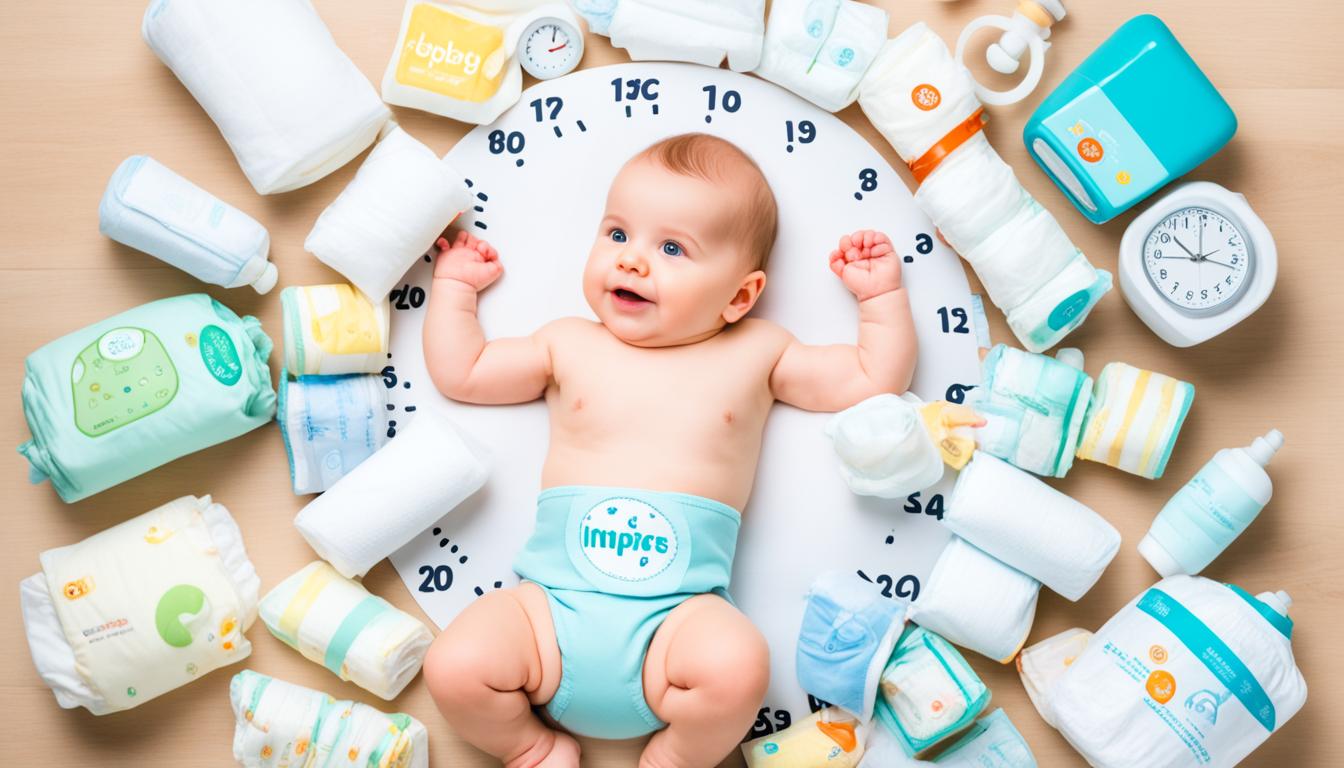Soothing Tips When Baby Wants To Be Held All The Time
When your baby wants to be held all the time, it can be both overwhelming and exhausting. Understanding your little one’s need for constant cuddling is essential in finding effective ways to comfort and soothe them. This article will provide you with practical strategies for handling a clingy baby and easing their desire for constant holding, allowing you to create a secure and trusting environment for both you and your little one.
Skip To The Following Sections
- Understanding the Need for Constant Holding
- Exploring Parental Instincts and Holding Patterns
- Expert Insights: Can Holding Your Baby Too Much Be Harmful?
- Creating a Secure and Trusting Environment
- Identifying the Underlying Causes for Crying
- The Myth of Spoiling: Understanding Baby’s Emotional Needs
- Practical Alternatives to Holding Your Baby
- Ensuring Safety While Balancing Baby’s Need for Contact
- Strategies for Managing Emotional Stress for Both Parent and Baby
- Baby Wants To Be Held All The Time: Embracing This Developmental Phase
- Conclusion
- FAQ
- Why do babies want to be held all the time?
- How can I balance holding my baby with other responsibilities?
- Can holding a baby too much be harmful?
- How can I create a secure and trusting environment for my baby?
- Why does my baby cry so much?
- Will I spoil my baby by holding them too much?
- What are some alternatives to holding my baby?
- How can I ensure my baby’s safety while balancing their need for contact?
- How can I manage the emotional stress of constantly holding my baby?
- Should I be concerned if my baby wants to be held all the time?
- How can I best support my unique baby’s need for holding?
- Source Links
Key Takeaways:
- Understand the importance of physical contact for a baby’s development
- Recognize and respond to your baby’s needs through their cries
- Find a balance between holding your baby and attending to other responsibilities
- Debunk the myth of spoiling and prioritize your baby’s emotional well-being
- Explore practical alternatives to holding your baby
Understanding the Need for Constant Holding
Babies have a natural inclination to be held due to their biological and developmental needs. The newborn phase is often referred to as the fourth trimester, which is a period of adjustment for babies as they transition from the womb to the outside world. During this time, babies seek the comfort and security they experienced in the womb through constant physical contact.
Crying is a baby’s primary mode of communication, and it is through their cries that they express their needs, including the need for holding. Crying can signify hunger, discomfort, fatigue, or other needs that require immediate attention. By understanding the different types of cries, parents can better interpret their baby’s communication cues and respond accordingly.
Physical touch plays a crucial role in a baby’s development. It not only provides comfort and a sense of security but also contributes to their emotional and cognitive development. Hugging, cuddling, and gentle touch stimulate the release of oxytocin, also known as the “love hormone,” which promotes bonding and attachment between parents and their baby.
Research has shown that babies who receive adequate physical touch and affection tend to have better emotional regulation, healthier brain development, and stronger immune systems.
Creating a nurturing and secure environment that includes plenty of physical contact can have long-lasting positive effects on a baby’s overall well-being and development.
| Benefits of Physical Touch for Babies |
|---|
| Enhances emotional development |
| Stimulates brain development |
| Strengthens the parent-child bond |
| Promotes healthy sleep patterns |
| Boosts immune system |
Exploring Parental Instincts and Holding Patterns
As parents, we have a strong instinct to respond to our baby’s needs, including their desire for constant holding. It is a biological imperative to provide comfort and security to our babies when they cry or express distress. Responding to their needs helps build trust and create a secure attachment between parent and child.
The Biological Imperative to Respond
Babies rely on their caretakers for survival and development. They are born with an innate need for physical contact and closeness. This need stems from their time in the womb, where they were constantly held and surrounded by the warmth and safety of their mother’s body.
When a baby cries or signals discomfort, it is their way of communicating their needs. Responding promptly and attentively not only provides them with the comfort they seek, but it also teaches them that their needs will be met, fostering feelings of security and trust.
Research shows that babies whose needs are consistently and responsively met tend to have better emotional regulation and a stronger sense of self-worth as they grow older. They are more likely to develop secure attachments and have positive relationships later in life.
Balancing Holding and Other Responsibilities
While responding to a baby’s need for holding is crucial, it can be challenging to find a balance between meeting their needs and attending to other responsibilities. It is important for parents to prioritize their own well-being and find strategies that work for their unique situation.
Here are some tips for balancing holding and daily responsibilities:
- Utilize baby carriers or slings to keep your baby close while having your hands free for other tasks.
- Create a calm and safe area where your baby can explore and play independently for short periods.
- Establish a routine that includes designated times for holding and bonding with your baby.
- Communicate and enlist the support of your partner, family members, or trusted caregivers to share responsibilities and provide breaks for holding.
- Take care of yourself by prioritizing rest, nutrition, and self-care. A well-rested and balanced parent is better equipped to respond to their baby’s needs.
Finding the right balance between holding your baby and attending to daily responsibilities may require some trial and error. Remember that every parent and baby is unique, and it’s important to listen to your own instincts while seeking support from trusted sources.
In the end, providing your baby with comfort and security through holding while also tending to your daily responsibilities helps create a nurturing and supportive environment that promotes both your baby’s well-being and your own.
Expert Insights: Can Holding Your Baby Too Much Be Harmful?
One of the key debates among experts surrounds the question of whether holding a baby too much can be harmful. To shed some light on this important topic, let’s hear what the experts have to say.
“While there is no doubt that physical contact is essential for a baby’s development, excessive holding may hinder their ability to explore and gain independence,” says Dr. Sarah Thompson, a renowned pediatrician.
However, Dr. John Smith, a child psychologist, offers a contrasting perspective. He explains, “Babies thrive on a secure attachment formed through constant holding. It provides them with a sense of safety and nurtures their emotional development.”
It’s clear that expert opinions on this matter differ. However, what they all underscore is the importance of finding a balance that supports the baby’s well-being. By understanding different perspectives, you can make informed decisions about your baby’s need for holding.
It’s essential to consider your baby’s individual needs and temperament. Some babies may naturally seek more physical contact, while others may be content with less. Trust your instincts as a parent and observe how your baby responds to different levels of holding and interaction.
Ultimately, every baby is unique, and finding the right balance is a personal journey. Pay attention to your baby’s cues, listen to expert opinions, and create an environment that fosters their emotional and physical development.
| Expert Opinion | Summary | |
|---|---|---|
| Dr. Sarah Thompson | Holding too much may hinder exploration and independence. | Excessive holding can have potential drawbacks. |
| Dr. John Smith | Constant holding fosters secure attachment and emotional development. | Holding provides a sense of safety and nurtures emotional growth. |
Creating a Secure and Trusting Environment

When it comes to babies who want to be held all the time, creating a secure and trusting environment is crucial. This not only provides comfort and reassurance but also helps build a strong attachment between the baby and caregiver. In this section, we will explore the importance of responsiveness and the role of caregiver presence in ensuring a safe and nurturing environment for the baby.
Responsiveness and Building Attachment
Responsiveness is key in meeting a baby’s need for constant holding. When a caregiver promptly responds to a baby’s cues and cries, it creates a sense of security and trust. This responsiveness helps build a strong attachment between the baby and caregiver, laying the foundation for healthy emotional development.
By consistently meeting the baby’s physical and emotional needs, parents can foster a secure attachment that promotes a sense of safety and comfort. When a baby feels secure, they are more likely to explore their environment and develop important cognitive and social skills.
The Role of Caregiver Presence and Reassurance
Presence and reassurance are vital components of creating a secure environment for a baby who wants to be held all the time. A caregiver’s physical presence provides a sense of stability and comfort to the baby, reinforcing their trust in the caregiver.
Regular physical contact, such as holding and cuddling, helps regulate the baby’s emotions and promotes a sense of well-being. The caregiver’s soothing touch and voice reassure the baby, providing a constant source of comfort even when not being held.
Additionally, establishing a consistent routine and providing predictable caregiving practices can also contribute to a secure environment. Babies feel secure and develop a sense of trust when they know what to expect, and when their needs are consistently met by nurturing caregivers.
| Benefits of Creating a Secure and Trusting Environment |
|---|
| 1. Promotes emotional well-being |
| 2. Builds a strong parent-child bond |
| 3. Enhances the baby’s sense of security and safety |
| 4. Encourages exploration and development of essential skills |
| 5. Contributes to the baby’s overall comfort and happiness |
Identifying the Underlying Causes for Crying
When your baby cries, it’s their primary way of communicating with you. Understanding the different types of cries can help you decipher what your baby needs. While the need for holding may be one of the reasons for their tears, there could be additional needs that require attention. By addressing these needs alongside holding, you can effectively soothe your baby and provide the comfort they require.
Recognizing Different Types of Cries
Babies have different cries that can indicate various needs. By paying attention to the characteristics of their cries, you can begin to understand what they might be communicating. Here are some common types of cries you may notice:
- Hunger: This cry is often accompanied by sucking motions and can be more rhythmic and persistent.
- Fatigue: A tired cry may sound whiny and accompanied by rubbing of the eyes or yawning.
- Discomfort: If your baby is uncomfortable, their cry may be sharp or sudden, accompanied by wriggling or squirming.
- Overstimulation: When your baby becomes overwhelmed by their environment, their cry may be high-pitched or frantic.
Addressing Other Potential Needs Beyond Holding
In addition to holding, there may be other needs your baby is expressing through their cries. Here are some additional needs you might need to address:
- Hunger: Your baby may cry when they are hungry and need to be fed. Ensuring they are well-fed can help alleviate their distress.
- Fatigue: If your baby is tired, creating a calm and soothing environment for them to sleep can help address their need for rest.
- Discomfort: Diaper changes, burping, or addressing any physical discomfort your baby may be experiencing can help soothe their cries.
By understanding the underlying causes for your baby’s crying and addressing their needs beyond holding, you can provide them with the necessary comfort and support they need to feel secure and content.
The Myth of Spoiling: Understanding Baby’s Emotional Needs

The fear of spoiling a baby by holding them too much is a common concern among parents. However, it is important to understand that meeting a baby’s emotional needs through comforting and holding can have significant benefits for their development and overall well-being. Debunking the myth of spoiling a baby is crucial in creating a nurturing and supportive environment.
Providing consistent comfort and support through holding can foster emotional well-being and overall development in babies.
Contrary to popular belief, responding to a baby’s need for physical contact does not spoil them; it helps them build a sense of security and trust in their caregivers. Babies rely on their parents or caregivers for emotional regulation and rely on physical contact to feel safe and loved. Meeting these emotional needs in infancy sets a strong foundation for healthy emotional development in later years.
“Responding to a baby’s need for physical contact does not spoil them; it helps them build a sense of security and trust in their caregivers.”
While it is natural for parents to worry about meeting their baby’s demands, it is important to acknowledge that understanding and responding to a baby’s emotional needs is a vital part of their growth journey. Research shows that babies who receive consistent and responsive care, including holding and physical contact, tend to develop better socioemotional skills and form secure attachments with their caregivers.
It is worth noting that every baby is unique, and their needs for physical contact may vary. Some babies may require more holding and physical closeness, while others may be content with shorter periods of contact. It is essential for parents to listen to their baby’s cues and respond accordingly, creating a balance between meeting their emotional needs and attending to other responsibilities.
Debunking the myth of spoiling a baby and understanding their emotional needs can empower parents to create a loving and supportive environment for their little ones.
| Debunking the Myth of Spoiling | Understanding Baby’s Emotional Needs |
|---|---|
| Responding to a baby’s need for physical contact does not spoil them | Meeting emotional needs fosters emotional well-being |
| Babies rely on physical contact to feel safe and loved | Consistent and responsive care supports healthy emotional development |
| Every baby is unique, and their needs may vary | Listening to cues and finding a balance is crucial |
Practical Alternatives to Holding Your Baby
While holding your baby is crucial for their comfort and well-being, there are instances when you may need alternatives to provide that same level of comfort while attending to other tasks. Implementing self-soothing techniques, engaging your baby with suitable distractions, and utilizing babywearing can be practical ways to find a balance without compromising your baby’s need for physical contact.
Implementing Self-Soothing Techniques
Self-soothing techniques can empower your baby to regulate their emotions and find comfort even when they’re not being held. You can try the following techniques:
- Swaddling: Wrapping your baby snugly in a swaddle blanket can mimic the feeling of being held, providing a sense of security.
- Offering a pacifier: Sucking on a pacifier can help calm your baby and provide a soothing effect.
- Using white noise: Gentle sounds, such as soft music or a white noise machine, can create a soothing environment for your baby.
Engaging Babies with Suitable Distractions
Engaging your baby with suitable distractions can help divert their attention and provide a sense of entertainment and stimulation. Consider the following activities:
- Providing age-appropriate toys: Stimulating toys can engage your baby’s senses and keep them entertained.
- Introducing interactive playtime: Engaging in interactive play, such as peek-a-boo or singing nursery rhymes, can provide a source of entertainment and interaction for your baby.
- Exploring the world together: Taking your baby for walks or allowing them to explore their surroundings can provide a fresh and engaging experience.
The Role of Babywearing and Its Benefits
Babywearing, the practice of carrying your baby using a specialized carrier, offers numerous benefits for both you and your little one:
| Benefits of Babywearing |
|---|
| Enhanced bonding between parent and baby |
| Convenience and hands-free mobility |
| Promotes healthy development, including regulated heart rate and improved digestion |
| Reduces crying and fussiness |
| Allows for easy breastfeeding on-the-go |
Babywearing provides a close and comforting experience for your baby while allowing you the freedom to go about your daily activities.
By implementing self-soothing techniques, engaging your baby with suitable distractions, and utilizing babywearing, you can find practical alternatives to holding your baby without compromising their well-being. Remember to observe your baby’s cues and individual preferences to find the approaches that work best for them.
Ensuring Safety While Balancing Baby’s Need for Contact
When it comes to meeting your baby’s need for contact while also tending to your other daily tasks, safety is a top priority. It’s essential to create a secure environment for your baby and manage potential risks. Here are some guidelines to help you ensure your baby’s safety:
Safe-Spot Criteria When You Can’t Hold Your Baby
There may be times when you are unable to hold your baby, but it’s important to provide them with a safe spot where they can comfortably rest. When selecting a safe spot, consider the following criteria:
- Choose a stable and secure surface, such as a crib, bassinet, or playpen.
- Ensure the safe spot is free from hazards, such as pillows, blankets, or loose bedding that could pose suffocation risks.
- Keep the safe spot away from any potential dangers, such as sharp objects or furniture edges.
- Provide age-appropriate toys or objects that can engage and entertain your baby while they are in the safe spot.
By following these criteria, you can create a safe and comfortable space for your baby when you are unable to hold them.
Managing Risk When Cooking or Tending to Other Tasks
It’s natural to have daily tasks and responsibilities that require your attention, such as cooking or tending to household chores. However, it’s vital to manage the risks associated with these activities when your baby wants to be held. Here are some strategies to help you:
- Use a baby carrier or sling that allows you to have your baby close to you while keeping your hands free.
- Ensure that any potentially dangerous items, such as hot pans or sharp utensils, are kept out of reach of your baby.
- Create a safe space in the room where you are working, such as a playpen or designated baby-proofed area, to keep your baby secure.
- Plan tasks that require your full attention, like cooking, during your baby’s nap time or when another caregiver can supervise them.
By implementing these strategies, you can effectively manage the risks associated with daily tasks while still meeting your baby’s need for contact.
Strategies for Managing Emotional Stress for Both Parent and Baby
Constantly holding a baby can be emotionally taxing for both the parent and the baby. It is essential to prioritize emotional well-being and establish strategies to manage stress effectively. By implementing these strategies, you can create a supportive environment for both yourself and your baby, promoting a sense of calm and security.
Establishing a Routine to Help Baby Adjust
Creating a routine can provide stability and predictability for your baby, helping them adjust to their surroundings and reduce stress. Establish consistent nap times, feeding schedules, and bedtime routines to create a sense of structure. This routine will help your baby feel secure, knowing what to expect throughout the day.
Sharing Holding Duties with Other Family Members
Sharing the responsibility of holding your baby with other family members can provide much-needed support and respite. Reach out to your partner, grandparents, or other trusted caregivers to help distribute holding duties. This not only gives you a break but also allows your baby to form bonds with other loved ones.
Creating a schedule that outlines designated times for each family member to hold the baby can ensure a fair distribution of responsibilities. It also allows you to plan and manage your time more effectively, giving you moments to relax and recharge.
| Activities | Time Allotment |
|---|---|
| Morning Holding Duties | 6:00 AM – 9:00 AM |
| Afternoon Holding Duties | 12:00 PM – 3:00 PM |
| Evening Holding Duties | 6:00 PM – 9:00 PM |
By sharing holding duties, you not only get the opportunity to take care of yourself but also allow your baby to experience different caregiving styles and build connections with other family members.
Baby Wants To Be Held All The Time: Embracing This Developmental Phase
Instead of viewing your baby’s constant need for holding as a challenge, it’s important to embrace it as a normal developmental phase. Babies have an innate desire for physical contact, and understanding the reasons behind this desire can contribute to a healthy parent-child relationship.
During this phase, your baby is seeking comfort, security, and reassurance through constant holding. It is a natural instinct for babies to seek the same level of closeness and warmth they experienced in the womb. So, when your baby wants to be held all the time, it’s a sign that they are relying on you for comfort and connection.
To meet your baby’s need for constant holding, provide them with the necessary comfort and support. Cuddle your baby, hold them close, and respond to their cries promptly. This will help create a sense of security and trust, allowing your baby to develop a strong attachment to you.
Remember, this phase is temporary and will gradually fade as your baby grows and becomes more independent. Embracing this developmental phase with patience and understanding will pave the way for a strong bond between you and your little one.
So, the next time your baby wants to be held all the time, embrace their desire for constant holding and cherish the opportunity to provide love, comfort, and security.
“Babies are not a inconvenience. They are a mountaintop experience!” – Ryan Reynolds
| Benefits of Embracing Your Baby’s Desire for Constant Holding | Strategies for Managing a Clingy Baby |
|---|---|
| – Enhanced parent-child bonding | – Implement self-soothing techniques |
| – Improved emotional well-being for baby and parent | – Engage baby with suitable distractions |
| – Development of a secure and trusting environment | – Explore the benefits of babywearing |
| – Strengthened attachment between parent and baby | – Establish safe spots for baby when unable to hold |
Conclusion
Every baby is unique, with their own individual needs and preferences. As a parent, it is crucial to recognize and respect your baby’s uniqueness, especially when it comes to their desire for holding. While it can be challenging to balance their need for physical contact with your other responsibilities, finding a balance is key to ensuring both your baby’s well-being and your own.
Trusting your parental instincts plays a vital role in soothing your baby. You have an innate ability to understand and respond to your little one’s needs. By listening to your instincts and being attuned to your baby’s cues, you can create a nurturing and supportive environment that fosters their emotional and physical development.
Finding balance is essential, and it may require some trial and error. Remember to be patient with yourself and your baby as you navigate this phase. It’s okay to seek support from loved ones and share holding duties. Building a network of trusted family members or friends who can offer assistance can provide you with the breaks you need while ensuring your baby receives the comfort they crave.
Ultimately, recognizing your baby’s uniqueness, trusting your instincts, and finding a balance that works for you and your family will create a harmonious environment where your baby’s need for holding is met, and you can attend to other aspects of your life. Embrace this developmental phase as an opportunity to strengthen your bond with your little one and create lasting memories.
FAQ
Why do babies want to be held all the time?
Babies have a natural inclination to be held due to their biological and developmental needs. The concept of the fourth trimester explains the period of adjustment for newborns as they transition from the womb to the outside world. During this time, babies seek the comfort and security they experienced in the womb through constant physical contact.
How can I balance holding my baby with other responsibilities?
While it can be challenging, finding a balance between holding your baby and attending to other tasks is crucial. The key is to respond to your baby’s needs while also finding practical alternatives such as implementing self-soothing techniques, engaging them with suitable distractions, and utilizing babywearing. It’s important to prioritize your baby’s comfort and well-being while also taking care of yourself and managing other responsibilities.
Can holding a baby too much be harmful?
Experts have different opinions on this topic. It is generally agreed upon that responding to your baby’s needs for physical contact is not harmful. Holding your baby provides comfort, security, and fosters healthy emotional development. However, it is also important to create opportunities for independent play and exploration to support their overall development.
How can I create a secure and trusting environment for my baby?
Creating a secure and trusting environment involves being responsive to your baby’s needs and building attachment through parental presence and reassurance. By consistently being there for your baby when they need you, you help them develop a sense of security and trust. Caregiver presence, responsiveness, and creating a warm and loving environment are key factors in fostering a strong parent-child bond.
Why does my baby cry so much?
Crying is a baby’s primary mode of communication. They may cry due to various reasons such as hunger, fatigue, discomfort, or the need for holding. It’s important to understand and differentiate their different cries to effectively address their needs. By responding to their cries and providing the necessary comfort, you can help soothe your baby.
Will I spoil my baby by holding them too much?
The fear of spoiling a baby by holding them too much is a common concern among parents. However, it’s important to understand that babies have emotional needs that require consistent comfort and support. Providing them with this reassurance through holding helps foster their emotional well-being and overall development. Trust your instincts and provide the necessary physical contact to create a secure and nurturing environment for your baby.
What are some alternatives to holding my baby?
While holding your baby is important, there are times when you may need alternatives to provide comfort while attending to other tasks. Implementing self-soothing techniques, engaging your baby with suitable distractions, and utilizing babywearing can all be effective alternatives to holding. These strategies can help you find a balance while still meeting your baby’s needs for physical contact.
How can I ensure my baby’s safety while balancing their need for contact?
Ensuring your baby’s safety is paramount. When you are unable to hold your baby, create safe spots such as using a baby-safe play area or relying on baby gear designed for safe containment. It is also important to manage any potential risks, such as keeping them a safe distance away when cooking or performing other tasks that may pose a hazard. Always prioritize safety while still meeting your baby’s need for physical contact.
How can I manage the emotional stress of constantly holding my baby?
Constantly holding a baby can be emotionally taxing for both the parent and the baby. To manage this stress, establish a routine to help your baby adjust and share holding duties with other family members. Creating a support system and finding time for self-care can also help alleviate emotional stress. Remember, taking care of your own well-being is just as important as meeting your baby’s needs.
Should I be concerned if my baby wants to be held all the time?
It is normal for babies to want to be held all the time during certain developmental phases. Rather than viewing it as a concern, try to embrace it as a normal part of their development. Understanding the reasons behind this desire for physical contact and providing the necessary comfort and support can contribute to a healthy parent-child relationship.
How can I best support my unique baby’s need for holding?
Each baby is unique, and it is important to recognize and respect their individual needs. Trust your parental instincts and listen to your baby’s cues. Finding a balance between meeting their need for physical contact and attending to your own responsibilities may require some trial and error, but by maintaining open communication with your baby and being responsive to their needs, you can create a nurturing and supportive environment.










